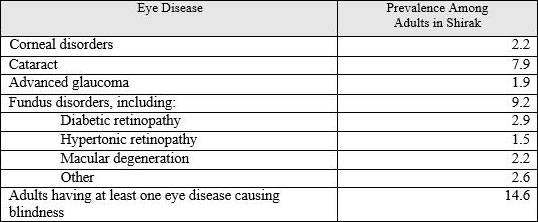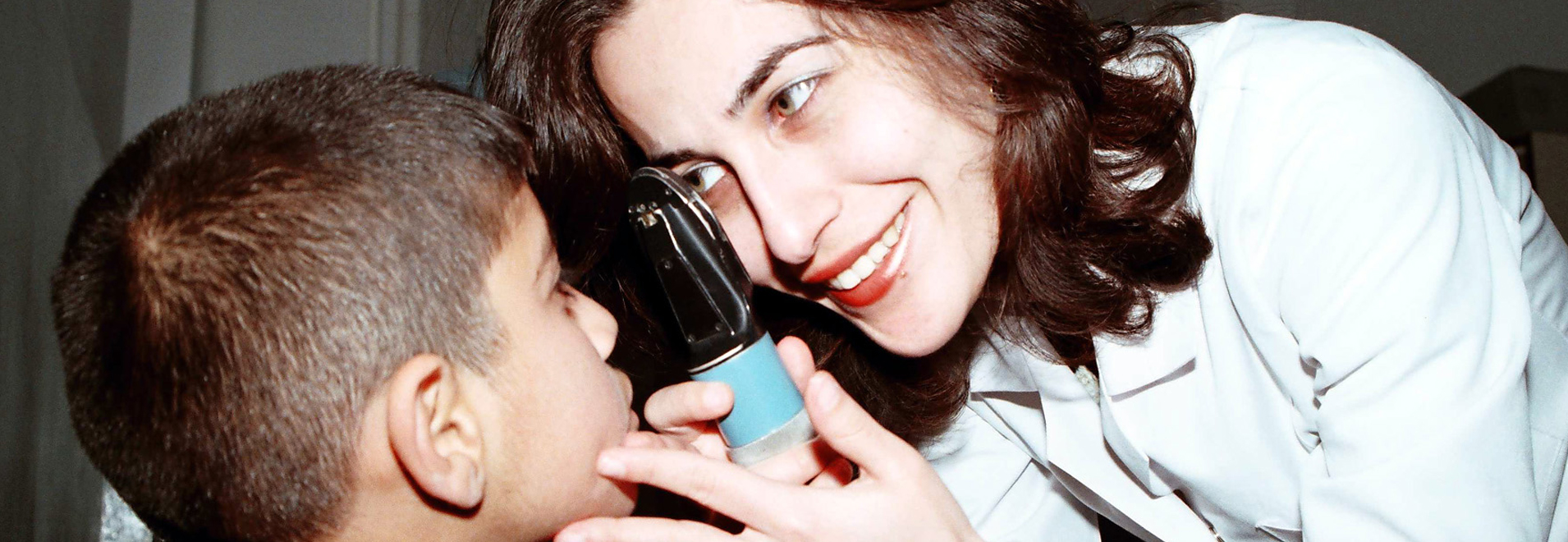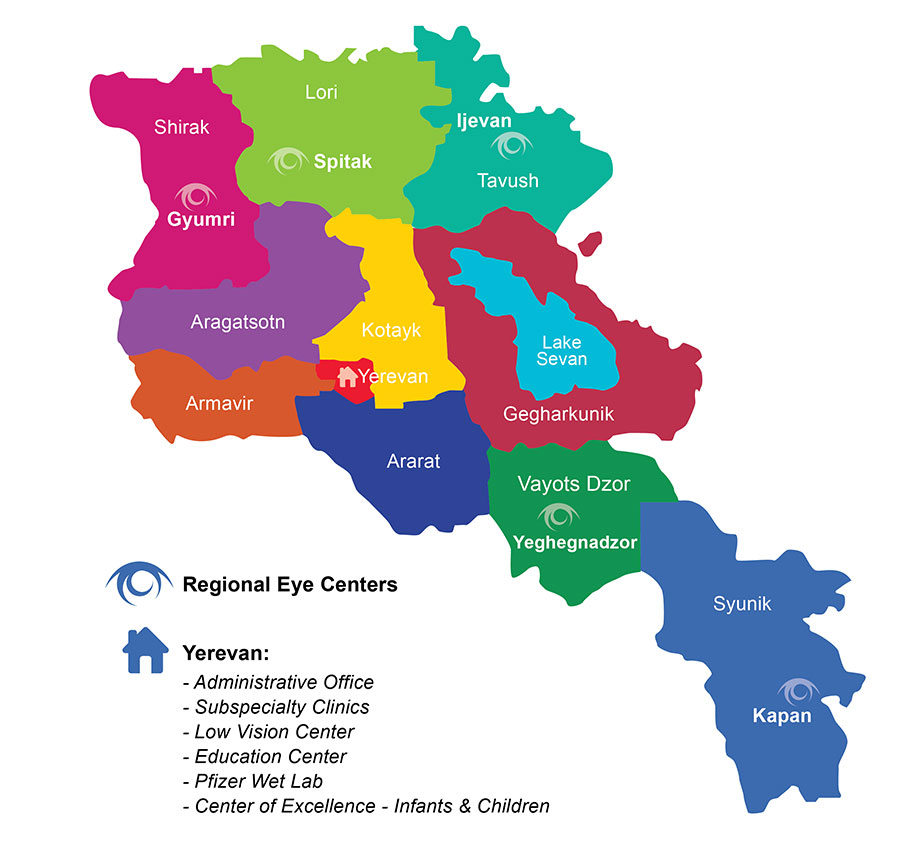Capital:
City of Gyumri
Provinces:
Artik, Akhuryan, Ani, Amasya, Ashotsk
Cities:
Gyumri, Artik, Maralik
The Shirak Marz has 119 communities — three urban and 116 rural — and 131 rural settlements. Shirak has a population 282,300 with 60 percent living in urban cities and 40 percent in rural areas. Gymri, the capital of the region, is the second largest city in Armenia with a population of 155,330 people.
Prior to the devastating 1988 earthquake, Gyumri was a major industrial center specializing in food production, light industry and machinery. Today Shirak contributes just 3.5 percent to Armenia’s total production. Agricultural contributes 11.6 percent to Armenia’s agricultural production.
Today, twenty-five years after the earthquake, Shirak is still recovering. The Marz continues to rebuild homes for the thousands of people who were displaced and is working to revive the industrial capacities of major cities.
Education Sector
There are 155 state educational institutions functioning under the jurisdiction of the Shirak governor’s office including secondary schools and high schools, gymansiums, specials schools, and higher education institutions. There are 26,230 school children in Shirak, ten percent of the school children in Armenia. Most teachers have teacher training and education — about 92.6 percent — and 80 percent of teachers are female.
Social Protection
According to the Regional Employment Center and the National Statistical Service there are 45,777 pensioners and 240 refugee families in Shirak.
Health Sector
There are 33 health institutions under the jurisdiction of the Shirak governor’s office, among them five polyclinics, a family medicine center, two maternity hospitals, three medical centers, six village medical ambulatories and six village health centers. Working in the health institutions are 476 doctors and 1,263 nurses. Outpatient visits at the ambulatory polyclinics in the region total 663,823.
In the cities of Shirak there are 12 ophthalmologists, most who provide primary eye care services to the residents. None of medical centers in the Marz have eye care departments that provide secondary or tertiary eye care services. The Shirak region also has a branch of the Howard Karageozyan Foundation, which provides charitable ophthalmological and dental services to children.
Residents of Shirak visit local ophthalmologists for diagnosis, basic treatment and eyeglass prescriptions. For more serious eye disease, complications, surgery and laser procedures most travel to Yerevan.
The leadership of Shirak believes the need for diagnosis and treatment is basically met, however, there is a great need for surgery and care for the more serious eye diseases. For a number of reasons the private centers are not well liked by residents and people prefer to wait for the AECP’s bi-annual visits when they can receive preventive screening, eyeglass prescriptions and detailed diagnosis at no cost. The vulnerable (poverty) population receives high quality surgery and laser treatments at no cost.
During the last mission to Shirak Marz, of the people who were screened by AECP, nearly 2.4 percent were diagnosed with advanced glaucoma, 22.5 percent with cataract, 2.3 percent with corneal disorders and 17.2 percent with fundus disorders. Using this data along with the demographic characteristics of Shirak we estimated the prevalence of eye diseases among the adult population (16 and over) of Shirak below.

According to Shirak authorities, the best location for an eye center would be the medical center of Gyumri in the capital of Gyumri because of its large population and central location in the region. There is a new ophthalmology center in the Gyumri Medical Center, which performs cataract surgeries, however, is poorly equipped. There is also a young practicing surgeon who has the potential to be trained and cover the eye care needs of the population in Gyumri. In addition there is a branch of the Malayan Eye Hospital, a private clinic that has been functioning since 2007. Shirak authorities are certain the area can support two centers given that the demand for eye care in Gyumri — the second biggest city of Armenia — and throughout Shirak is substantial.
Operations
After ten years of providing eye care services at no charge to the patient, the AECP is considering the possibility of introducing a fee-for-service component to its charitable program. As a nonprofit organization, the AECP will continue to pursue its mission to eliminate preventable blindness and to provide access to quality eye care for all Armenians. Going forward, in addition to providing surgery and other advanced care to the vulnerable population at no charge, the AECP will provide services for all income groups for a fee. This will enable the Project to continue its programs for the poor at no charge and ensure the sustainability of the Regional Center and the AECP program.
For budgeting purposes the AECP will estimate patient load and income based on the number of surgeries the AECP Mobile Eye Hospital performs — average of 354 surgeries and 118 lasers per visit in Lori. However, it is assumed that this number will be significantly higher since the MEH is in Lori only once every two years. Fees for services will be comparable to those charged in Yerevan and Gyumri. The Project estimates:
Expected Results:
- 6,000 persons, including children, seen by a physician
- 0,350 persons eligible for free surgery; 50% of cases reimbursed by the state
- 0,100 lasers
- 0,180 patients who will pay for the services







